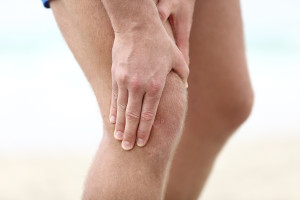
A new study about two different injections to treat osteoarthritis in the knee provided mixed results on which is more effective.
On the bright side, however, the treatments provided “absolute improvement” for nearly all 200 patients who participated in the study, regardless of which injection they received.
The study looked at how patients with osteoarthritis in the knee responded over a year’s time to injections of hyaluronic acid versus corticosteroids.
After three months, patients who received the steroids saw a 66.3 percent reduction in pain compared with a 48.5 percent reduction for those given hyaluronic acid injections, according to researchers at the School of Medicine, Universidad Nacional Autonoma de Mexico in Mexico City.
By 12 months, however, the average decrease in pain in the hyaluronic acid group was 33.6 percent compared with only 8.2 percent among those receiving the steroid, the researchers said in Open Access Rheumatology: Research and Reviews.
Treat the cause
Susan Day, MD, who specializes in orthopaedic surgery for Spectrum Health Medical Group, said the steroid injections are typically used to treat swelling and severe knee pain as well as arthritis, while hyaluronic acid is generally only used for arthritis treatment.
Steroids are an anti-inflammatory. Dr. Day uses the steroid injection to treat “acute pain” in patients, she said.
The hyaluronic acid, however, treats the cause of the pain by creating more fluid in the joint area.
“If we go back to what arthritis is, it’s the inflammation of the joint,” Dr. Day said. “And how that happens is the joint surface gets warm and the cartilage gets rough.”
Or, the cartilage can wear away and the bones will rub against each other, or get “hung up” in the rough cartilage, she said. That rubbing and sticking causes swelling and pain.
Joint fluid helps keep the cartilage smooth, which helps the bones slide over it and avoid irritation.
“Hyaluronic acid is a mechanism to supplement that joint fluid,” she said. “It’s supposed to be smooth, let the bones glide over each other, and that’s what the hyaluronic acid aids with.”
Long-term success
The study conducted by Mexican researchers consisted of five weekly injections of hyaluronic acid for one set of patients, and two steroid injections one month apart for the other set. The average age of the patients was 63 years old.
The percentage of patients achieving clinically important “absolute improvement” was almost 100 percent in both groups at six months, according to researchers. By nine months, however, the percentage in the hyaluronic acid group was 81.4 percent but only 9.2 percent in the steroid group.
Dr. Day said this finding is consistent with her experience, where steroids are intended to be used in the short term to treat swelling and heavy pain, but hyaluronic acid may have more long-term success.
She cautioned, however, that each patient responds differently to the treatments.
“If a patient comes in with knee pain and arthritis, a lot of swelling, a lot of pain, we’ll probably start with the steroid,” Dr. Day said. “Sometimes it gets pain settled down, sometimes it’s not enough. Sometimes I get people who don’t respond at all.”
The only adverse effect during the study: pain at the injection site in 3 percent of patients.
“Both are valuable treatment arms, they maybe just work a little differently,” Dr. Day said.
 /a>
/a>
 /a>
/a>
 /a>
/a>
Yes, this post is educational